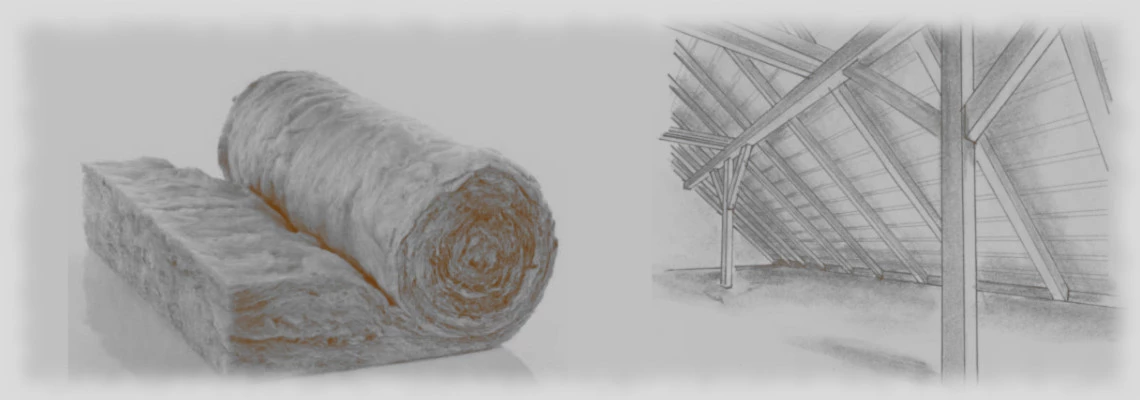
BEST LOFT INSULATION – PRACTICAL GUIDE*
Insulating the attic is one of the most important steps you can take to reduce bills. Therefore, you need to choose the best form of insulation available. There are many options available up there. So how do you choose the right one?
In this article, you will learn about the main types of loft insulation in the UK. What are their pros and cons, how much does insulation per square meter cost, and what criteria should you consider when choosing it.
BEST INSULATION FOR LOFT - HOW DOES LOFT INSULATION WORK?
Generally speaking, loft insulation works by trapping warm air inside the house and preventing it from rising through the roof. The main purpose of loft insulation is to physically separate it thermally from the external conditions and temperatures. Whether dealing with a flat roof or a pitched roof, its thermal insulation should retain warmth inside the building and block access of cold air on its outer side. Loft insulation is crucial because its absence can lead to a loss of up to 25% of the internal building temperature. This is directly related to the laws of physics, which cause warm air to rise.
Essentially, the principles of loft insulation operation can be described in as many ways as there are types of insulation. For example, reflective foil insulation works by reflecting heat, while roll mineral wool accumulates heat within itself. PIR boards, on the other hand, thanks to their aluminium coating, both reflect and accumulate heat.
BEST INSULATION FOR LOFT - TYPES OF LOFT INSULATION IN UK
When insulating a loft, it's important to consider that the insulation should be relatively lightweight, easy to cut, and install.
In the United Kingdom, there are up to ➽5 types of insulation available for attic use. Determining which is best is challenging as each offers distinct advantages. However, comparing them all can help select the most suitable type for individual needs.
Here are the loft insulation types used to insulate homes in UK:
1. MINERAL WOOL - GLASS WOOL AND STONE WOOL LOFT INSULATION
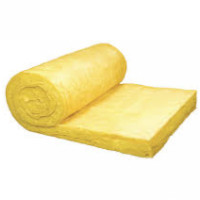 Glass mineral wool is a well-known thermal insulation material. It is available in the form of rolls or slabs. Roll-form mineral wool is often referred to as glass wool because it is made from glass, and its colour is typically yellow. It is the cheapest insulation currently available in the UK insulation materials market. Its installation involves cutting the wool to size and placing it between the joists. Installing it is straightforward, yet it can be messy due to the fibre glass dust it generates. Moreover, it never dries out if it comes into contact with water and becomes unusable. It can also sag after 15 years, becoming loose and creating significant thermal bridges. Its relatively high thermal conductivity requires the use of a thicker layer, which is not always possible. However, it is very easy to transport, readily available in stores such as B&Q or Wickes, and affordable. So, if you prioritise rapid attic insulation and are not concerned about its long-term performance, this product may be your best choice.
Glass mineral wool is a well-known thermal insulation material. It is available in the form of rolls or slabs. Roll-form mineral wool is often referred to as glass wool because it is made from glass, and its colour is typically yellow. It is the cheapest insulation currently available in the UK insulation materials market. Its installation involves cutting the wool to size and placing it between the joists. Installing it is straightforward, yet it can be messy due to the fibre glass dust it generates. Moreover, it never dries out if it comes into contact with water and becomes unusable. It can also sag after 15 years, becoming loose and creating significant thermal bridges. Its relatively high thermal conductivity requires the use of a thicker layer, which is not always possible. However, it is very easy to transport, readily available in stores such as B&Q or Wickes, and affordable. So, if you prioritise rapid attic insulation and are not concerned about its long-term performance, this product may be your best choice.
Stone wool is quite different from glass wool. 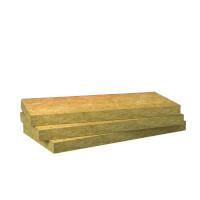 It's made from natural materials like rock, making it entirely non-combustible. Typically shaped as solid slabs, though sometimes available in rolls, its dense structure gives it a green-grey or brown colour. Unlike glass wool, it has better thermal conductivity, allowing for thinner insulation layers. Its solid slab form prevents sagging between joists, and while it can dry when wet, it may take some time. Its greatest advantage lies in its acoustic properties. In the UK market, there's hardly any loft insulation that matches its ability to reduce noise from nearby traffic or airports. If you live near such areas, stone wool could be your top choice, providing both insulation and fire resistance. While it may not be the cheapest option upfront, once installed, it serves for many years to come.
It's made from natural materials like rock, making it entirely non-combustible. Typically shaped as solid slabs, though sometimes available in rolls, its dense structure gives it a green-grey or brown colour. Unlike glass wool, it has better thermal conductivity, allowing for thinner insulation layers. Its solid slab form prevents sagging between joists, and while it can dry when wet, it may take some time. Its greatest advantage lies in its acoustic properties. In the UK market, there's hardly any loft insulation that matches its ability to reduce noise from nearby traffic or airports. If you live near such areas, stone wool could be your top choice, providing both insulation and fire resistance. While it may not be the cheapest option upfront, once installed, it serves for many years to come.
2. SHEET RIGID LOFT INSULATION - PIR AND PHENOLIC FOAM
Almost everyone in the UK has likely heard of companies like Celotex or Kingspan, as they are synonymous with rigid foam boards. These leading brands were among the first to start their production, although their properties differ slightly.
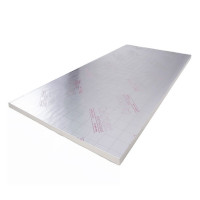 ‘Celotex’, for instance, is known for its PIR boards covered with aluminium foil on both sides, available in 8' x 4' formats. With a thermal conductivity of 0.020W/mK, it's considered one of the most cost-effective options. PIR boards are manufactured by well-known manufacturers such as Celotex, Unilin, Recticel, or Ecotherm. They are easy to cut, very lightweight, and waterproof. Their aluminium coating is resistant to mice or rodents, and when properly installed, it can replace a vapour control layer. PIR boards are incredibly popular in the UK due to their widespread availability. Nowadays, you can find them in almost any building supply store.
‘Celotex’, for instance, is known for its PIR boards covered with aluminium foil on both sides, available in 8' x 4' formats. With a thermal conductivity of 0.020W/mK, it's considered one of the most cost-effective options. PIR boards are manufactured by well-known manufacturers such as Celotex, Unilin, Recticel, or Ecotherm. They are easy to cut, very lightweight, and waterproof. Their aluminium coating is resistant to mice or rodents, and when properly installed, it can replace a vapour control layer. PIR boards are incredibly popular in the UK due to their widespread availability. Nowadays, you can find them in almost any building supply store.
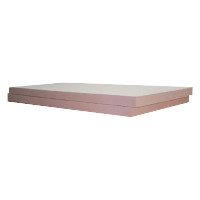 On the other hand, phenolic foam has a different story. Its production was initiated by Kingspan. Its thermal conductivity is among the best on the market (0.018W/mK).
On the other hand, phenolic foam has a different story. Its production was initiated by Kingspan. Its thermal conductivity is among the best on the market (0.018W/mK).
Using phenolic foam for loft insulation pays off with the smallest thickness required to achieve the required U-value. These boards, like PIR, are quite large at 2400mm x 1200mm, but they are easier to cut with a regular handsaw. Phenolic boards are commonly associated with the colour pink, as that is their natural hue. Besides all their excellent properties, their biggest drawback is the price per square metre. They are currently one of the most expensive types of insulation available. If you aim for a passive house that requires minimal gas consumption for heating, and quality rather than price is the criterion for selection, then phenolic boards will be your best choice.
3. SPRAY FOAM LOFT INSULATION
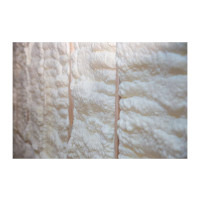 Spray foam insulation using polyurethane foam is considered a modern, effective, and easy method for insulating lofts. This insulation involves spraying polyurethane foam (PUR) using a modern spraying unit. The process is swift and efficient because the foam adheres and conforms to any surface. Within seconds, the foam expands, fills all gaps, and hardens, creating a seamless, airtight insulation layer. The outer surface of the foam can be easily shaped to fit any form using appropriate tools.
Spray foam insulation using polyurethane foam is considered a modern, effective, and easy method for insulating lofts. This insulation involves spraying polyurethane foam (PUR) using a modern spraying unit. The process is swift and efficient because the foam adheres and conforms to any surface. Within seconds, the foam expands, fills all gaps, and hardens, creating a seamless, airtight insulation layer. The outer surface of the foam can be easily shaped to fit any form using appropriate tools.
Its main drawback, besides the high cost, is the issue with home insurance companies. Despite providing excellent insulation for the loft, it may cause problems when trying to sell the house. Why is that? Insurance companies, in agreements with banks, may refuse to provide mortgage for houses where they cannot assess the condition of the roof rafters and see if they are not rotten. Therefore, when considering spray foam insulation, keep this in mind, as you may be required to remove it when selling the house.
4. SHEEP’S WOOL LOFT INSULATION
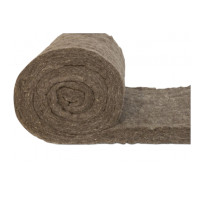 Sheep's wool is a natural insulation material that perfectly aligns with the principles of sustainable construction. It boasts excellent physical properties and versatility for various applications.
Sheep's wool is a natural insulation material that perfectly aligns with the principles of sustainable construction. It boasts excellent physical properties and versatility for various applications.
Sheep's wool insulation fits these criteria perfectly. Even during production, 1 ton of sheep's wool insulation can save 1.6 tons of CO2 emissions compared to the production of mineral wool or glass wool with the same insulation parameters.
Sheep's wool insulation has the ability to absorb odours and air pollutants, making it suitable for modernising old attics. Thanks to its ability to bind various harmful substances like formaldehyde, it effectively purifies the air and protects human health.
Unlike mineral wool, sheep's wool can absorb and release moisture without losing its insulating properties, making it ideal for high-humidity conditions. It also maintains its original shape over time, preserving its insulation properties for years.
In the UK, sheep's wool is a local product, meaning it doesn't require transportation over long distances.
However, attic insulation with sheep's wool exhibits lower thermal efficiency compared to other insulation materials. Consequently, it's not widely considered the best thermal insulator. Its lambda value ranges from λ 0.04 to 0.042 W/mK, similar to other natural insulators like wood wool or cork.
In the UK, where this material is relatively popular, the price can be as high as £55 per square metre, significantly more expensive than mineral wool insulation (around £15 per square metre) and spray foam insulation (which varies in price but is around £40 per square metre for selected thickness).
5. LOOSE-FILL LOFT INSULATION
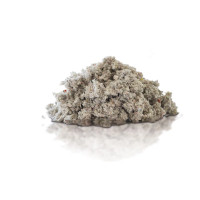 Loose fill insulation, crafted from repurposed newspapers and blended with a premium mineral fire retardant, adheres to rigorous quality benchmarks, providing an eco-friendly and economical solution for insulating flat surfaces like your attic. Insulating your loft with loose fill insulation is remarkably simple; it involves carrying several lightweight bags and spreading them across the entire floor separating the attic from the living space.
Loose fill insulation, crafted from repurposed newspapers and blended with a premium mineral fire retardant, adheres to rigorous quality benchmarks, providing an eco-friendly and economical solution for insulating flat surfaces like your attic. Insulating your loft with loose fill insulation is remarkably simple; it involves carrying several lightweight bags and spreading them across the entire floor separating the attic from the living space.
With a thermal conductivity of 0.039 W/mK, each bag weighs around 12 kg and is typically delivered in dimensions of 78 cm high x 38cm wide x 32cm deep. Designed for use between floor joists and as loft insulation, this insulation product easily fills all gaps and hard-to-reach areas. However, its significant drawback is its potential to transfer air from one place to another in draughty, uninsulated roofs, which can result in thermal bridging.
Moreover, it provides a secure and fire-resistant barrier, is breathable, and is 100% organic. With a laid density of up to 40kg/m3, it's also an excellent soundproofing material. Due to its ease of installation and transport, it's primarily used for loft insulation. Additionally, it's not overly expensive, as a single bag costs around £28.
Therefore, if you're seeking insulation that's incredibly easy to apply in your loft, loose fill insulation will be the best insulation material you can use.
BEST INSULATION FOR LOFT - WHICH ONE IS THE BEST?
Thermal insulation used for loft insulation is subjected to the most rigorous conditions. These include high humidity, significant temperature variations, pests, the possibility of roof leaks, drafts under the roof, and the prevailing dust. When selecting insulation for the loft, the second factor to consider is the process of transporting, cutting, and installing the insulation. Its low thermal conductivity and density are crucial too. The lower these values, the lower the product's U-value. Of course, one cannot forget about the price of the product, its fire resistance, and acoustic properties.
Therefore, if one were to find insulation material that meets all these conditions and is resistant to the situations described above, it could be said that it is the best product to use for loft insulation in a home. Unfortunately, such a material does not yet exist on the UK market. Each of them distinguishes one or two features that other types of insulation do not have, and vice versa.
The best way to find the best loft insulation material is by checking out a comparison table of all insulation types. According to that, PIR rigid board comes out as the best choice.

Tab 1. Loft insulation comparison
BEST INSULATION FOR LOFT - IS A 100MM OF INSULATION ENOUGH IN A LOFT? BEST THICKNESS
Currently, the required U-value for roofs is 0.16W/m2.K. If you use mineral wool with a thickness of 270mm, it will provide you with a U-value of 0.15W/m2.K. Insulation of 200mm gives a U-value of 0.18W/m2.K, while 100mm provides 0.28W/m2.K. A thickness of 100mm for mineral wool, however, will be insufficient.
Nevertheless, placing 100mm of insulation in the attic of a home without insulation will result in a 72% increase in efficiency. Adding another 100mm will increase efficiency by a further 10%. The difference between 200mm and 270mm is only about 15%.
Only a thickness of 120mm of phenolic boards, such as Kingspan K107 or Unilin SR/PR, provides a satisfactory result of 0.016W/m2.K. On the other hand, using a thickness of 100mm of PIR boards, whether Unilin or Celotex, will result in a coefficient of 0.21W/m2.K.
BEST INSULATION FOR LOFT - 5✔ LOFT INSULATION PROS AND CONS
Every type of insulation used for loft insulation has its pros and cons. Below are the 5✔ main advantages and disadvantages:
1. MINERAL WOOL - GLASS WOOL AND STONE WOOL LOFT INSULATION
Pros:
- Most affordable loft insulation option
- Easy to install
- Very lightweight
- Readily available in almost any store
- Natural product
Cons:
- High thermal conductivity
- Does not dry when in contact with water
- Can settle over time
- Not pleasant for eyes and face
- Requires thicker layers for effective insulation
2. SHEET RIGID LOFT INSULATION - PIR AND PHENOLIC FOAM
Pros:
- Rigid board
- Easy to transport
- Low thermal conductivity
- Aluminium foil facing
- Optimal material thickness
Cons:
- Relatively expensive to buy
- Fire resistance class E-F
- Requires precision in cutting
- Cannot be exposed to sunlight
- Large board dimensions
3. SPRAY FOAM LOFT INSULATION
Pros:
- Seals every gap
- Very low U-value
- Low maintenance
- Quick installation
- Waterproof
Cons:
- High installation cost
- Requires the use of expensive spray machines
- Chemical composition
- Banks may not provide mortgages for homes with this type of insulation
- Low air permeability
4. SHEEP’S WOOL LOFT INSULATION
Pros:
- Natural product
- Regulates moisture
- Good acoustic properties
- Very easy to install
- Non-itchy during installation
Cons:
- High thermal conductivity
- Requires thicker layers
- Price
- Difficult to buy
- Ideal for rodents
5. LOOSE-FILL LOFT INSULATION
Pros:
- Available in 12kg bags
- Easy to install
- Lightweight
- Extremely fast to install
- Suitable for DIY installation
Cons:
- Vulnerable to air drafts under the roof
- Not water-resistant
- Material thickness
- Loose material
- Relatively high thermal conductivity
BEST INSULATION FOR LOFT - BEST INSULATION FOR LOFT CEILING
If you've opted to insulate the ceiling between the living area and the attic, the roof stays without insulation, known as a "cold roof." This setup is fine if you use the right insulation for the ceiling. Heat moves through it, impacting the insulation's effectiveness. Deciding on insulation depends on factors like cost and conditions. Luckily, there are universal options that fit the bill. The PIR board, also known as "Celotex," is a common pick, named after its manufacturer.
PIR boards used for insulating the ceiling between the living space and the loft have one of the lowest thermal conductivity ratings (0.020). They don't require thicker layers of insulation, are very easy to cut, and are rigid, making them easy to install between ceiling joists. Additionally, the outer side of PIR are often covered with loft boards, therefore less frequently used items can be stored on loft.
BEST INSULATION FOR LOFT - CHEAPEST PLACE FOR LOFT INSULATION
In the vast majority of cases, people prioritise price when choosing loft insulation. It is the most important criterion. This is perfectly understandable, especially as everything around us seems to be getting more expensive. So, we begin to search for the cheapest place to buy loft insulation. Surely, such places include online stores where products can be purchased much cheaper. Why? It is because most insulation materials are delivered directly from the manufacturer, eliminating indirect costs such as storage or transportation fees. Freshly manufactured materials with a very long shelf life are delivered to your doorstep. So, why not give us a try and see if we can offer you a good price?
CONCLUSION
In conclusion, when it comes to choosing the best loft insulation, price is often the key factor for many individuals. With the rising costs in today's market, finding cost-effective solutions becomes increasingly important.
However, it's essential to remember that price doesn't always correlate with quality. If you're planning to sell your home in the future, you may opt for the cheapest loft insulation roll. However, if you prioritise low gas bills and effective insulation, you should consider installing PIR or phenolic boards.
Related Searches:
WHAT TO CONSIDER WHEN CHOOSING INSULATION MATERIALS
HOW TO CUT A PIR INSULATION BOARD?
HOW TO CUT FIBREGLASS INSULATION?
THE PRICE OF COMFORT: UNRAVELLING WHY INSULATION IS SO EXPENSIVE
*Insulationgo LTD strives to keep the content accurate and up-to-date, but we cannot be held responsible for any mistakes or exclusions.
The information in this blog isn't expert advice and shouldn't replace talking to the right specialists. Before buying or deciding anything based on this info, it's best to contact the product manufacturer directly to double-check if it's right for what you need.
Descriptions, drawings, photographs, data, proportions, weights, and measured values provided here may change without prior notice and do not establish the guaranteed contractual quality of the products. The recipient of these products holds the responsibility to comply with proprietary rights, existing laws, and legislation.
Using this blog implies acknowledgment and agreement that Insulationgo LTD cannot be held accountable for any damages, losses, or inconveniences resulting from the use or reliance upon the information provided. This limitation of liability extends to all users of the blog, including visitors, readers, and subscribers.










































































































